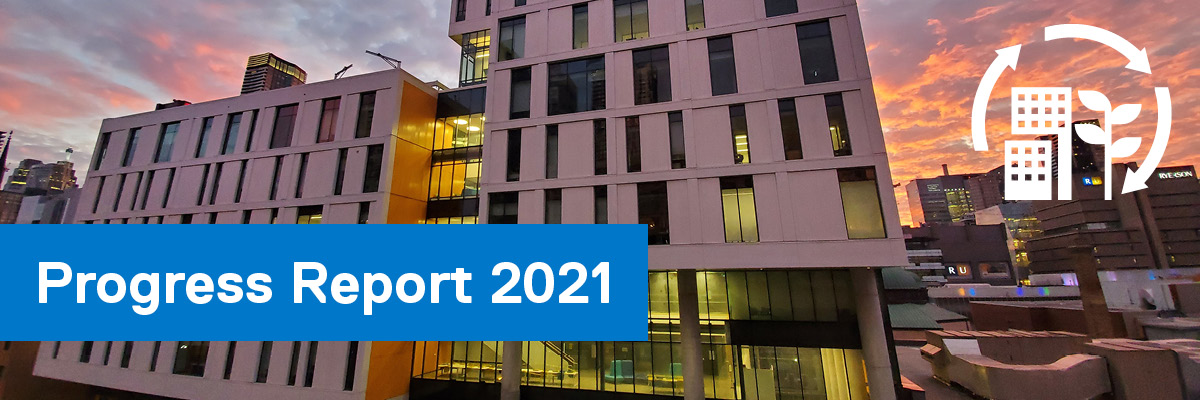Waste

According to our most recent waste audit in 2019, TMU’s waste diversion rate was approximately 40%, slightly increasing over the past 6 years, but still below the Province's target of 60%. The slight increase could be the result of implemented initiatives such as the addition of the organics stream. The 2020 audit was not completed as a result of the COVID-19 pandemic and absence of people on campus.
In 2019, TMU's waste diversion rate was 40%, slightly increasing over the past 6 years.
TMU's annual waste diversion rates

This bar graph shows TMU's annual waste diversion rates from 2013 to 2019 calculated in percentages compared to the provincial waste diversion target of 60%.
| Year | Diversion Rate (%) |
|---|---|
| 2013 | 34 |
| 2014 | 39 |
| 2015 | 33 |
| 2016 | 36 |
| 2017 | 40 |
| 2018 | |
| 2019 | 40 |
TMU has taken significant steps over the past few years to improve waste diversion on campus.
Key improvements include:

Purchasing more than 400 new standardized waste receptacles with consistent signage, for 23 buildings and outdoor locations, which will continue to be rolled out in 2021.

Transitioning our campus from a 3-stream system (waste to landfill, bottles & cans, and paper) to include a fourth stream (organics).

Entering a new waste hauling contract to enable more accurate data collection on waste generation and diversion.

Increasing education and awareness including conducting educational sessions for 60+ custodial and groundskeeping staff on proper waste management practices at TMU. Session discussions provided important on-the-ground feedback for ways to improve waste management on campus.
There is a renewed focus on waste reduction and the elimination of single use plastics, as opposed to solely diversion, as a metric for successful waste management. Future data collection efforts will be undertaken to report on these items.
